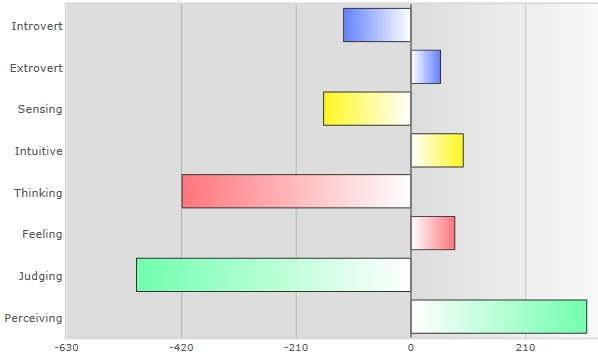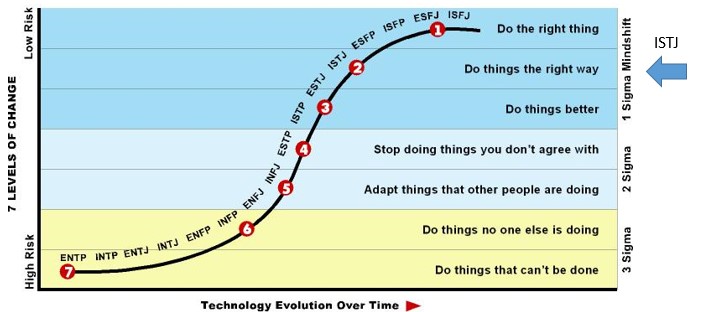Every organisation on the planet these days seems to be wanting an ‘innovation culture’. Or at least they do until they understand what they’re asking for. The first problem is being able to make any kind of meaningful measurement of the prevailing ‘culture’. The second is knowing what the measurement needs to change to.
The biggest programme of PanSensic R&D activity at the moment is creating a suite of psychometric tools. Although initially conceived as a means of allowing individuals to assess themselves through the various different lenses (Belbin, Kirton, DISCUS, etc), because the system needs only a pile of narrative to do its job, it means we’re able to do things that the traditionally questionnaire-based assessment tools have never been able to. Like measuring the Myers-Briggs profile of a whole enterprise.
At first, we thought that when we analysed masses and masses of narrative authored by many different individuals within an enterprise, we’d end up with a meaningless cancelling out of the various different measurement axes. Such that, for example, all of the ‘extroverts’ in the enterprise would be matched by an equivalent number of ‘introverts. So far that hasn’t been the case. Here’s the sort of picture we seem to end up with:
The picture is typically constructed by feeding company reports, website content, and ideally (anonymized) email traffic into the PanSensic engine. What it then spits out is a set of psychometric profiles of the overall organisation. In the case of the image presented above, we can say previously inconceivable things like ‘this organisation is an ISTJ’.
And what that in turn allows us to do is to correlate to the types of change that kind of ‘person’ tends to be comfortable with. The following image plots the sixteen different Myers-Briggs profiles relative to the seven main types of change needed at different stages of an evolutionary s-curve:
ISTJ’s are your great ‘do things the right way’ optimisers. They’re not innovators, and the expression ‘innovation culture’ tends not to be part of their vocabulary. Unless it’s something like when they say, ‘innovation culture? Isn’t that when they make everyone wear facepaint and dance like a tree?’
This ISTJ organisation, in other words, is going to find the journey to an ‘innovation culture’ a long and probably tortuous one. But at least we now know where we’re starting from and, once we’ve also psychometrically profiled their competitors and aspirations, we know where their destination should be. And that the journey, initially at least, should keep the tree choreography instructions in a triple-padlocked cupboard.


